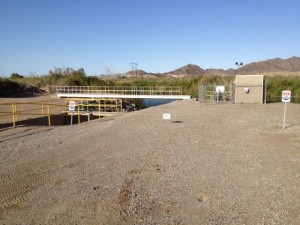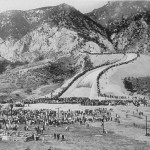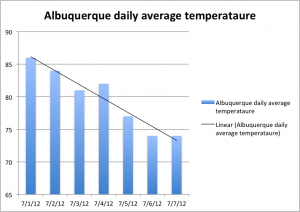In the past, I’ve used the Bureau of Reclamation’s Yuma Desalting Plant as a sort of benchmark for measuring who’s the most desperate for water in the Lower Colorado River Basin, and the level of that desperation.
Tony Davis had an excellent look at the project this past week in the Arizona Daily Star, and the provisional answer it suggests is “no one”.
The U.S. Bureau of Reclamation had expected the desal plant’s test run to cost $23 million. The final tab was $15.9 million. The test was to last up to 365 days but treatment was finished in 328 days.
Nonetheless, the plant’s most immediate obstacle to long-run operations is lack of money. But a significant amount of fact-gathering and discussions must also occur, water officials and environmentalists said.
The current tight federal budget has no money to run the plant at full scale, said Jennifer McCloskey, Yuma-area manager for the Bureau of Reclamation, which runs the plant.
The plant also needs $25 million to $50 million in upgrades, she said.

Yuma Desalting Plant outfall, Colorado River, February 2012
I haven’t dug into the numbers in detail myself, so it’s not clear to me how much it per acre foot of water it would cost, for example, the Metropolitan Water District of Southern California to operate the plant. But since they’re not stepping forward, I infer that they’re not desperate enough, at least yet, to pick up the tab.
But in classic western water tradition, Tony’s story does suggest an alternative path that might yet put the YDP to use – get federal taxpayers to pick up the tab!
The Central Arizona Project and other regional water agencies want the plant open for additional water during droughts – particularly with the Colorado River heading this year toward one of its lowest flows on record. CAP’s view is that running the plant is a federal responsibility, and the bureau should figure out the most effective and efficient method of running it, said Chuck Cullom, CAP’s Colorado River programs manager.
“The fact that Reclamation doesn’t request funding for the plant … doesn’t change what we believe is a pretty clear obligation,” Cullom said.



